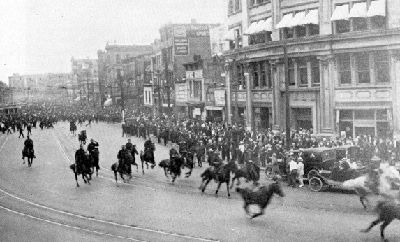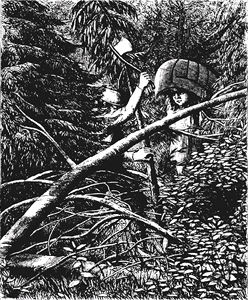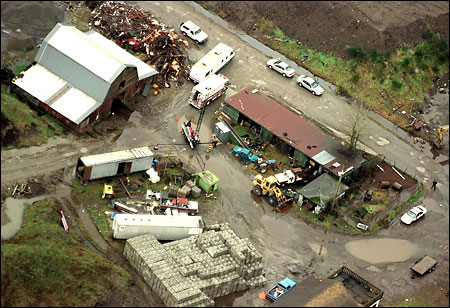Browse "Things"
-
Article
Rights Revolution in Canada
The time between the end of the Second World War and the signing of the Canadian Charter of Rights and Freedoms in 1982 is often referred to as the Rights Revolution in Canada. During this period, awareness of and support for human rights increased. At the grassroots level, women, queer communities, Indigenous peoples, and disability activists pushed for greater inclusion and made significant rights gains. At the same time, both federal and provincial governments passed laws that prohibited discrimination and protected human rights for more people across Canada.
"https://d2ttikhf7xbzbs.cloudfront.net/media/media/60a22170-8899-482c-a931-09f5860302dd.jpg" // resources/views/front/categories/view.blade.php
https://d2ttikhf7xbzbs.cloudfront.net/media/media/60a22170-8899-482c-a931-09f5860302dd.jpg
-
Article
Ringette in Canada
Ringette is a skating sport played on ice using a straight stick and a hollow rubber ring. The sport was invented in Canada and is now played in countries around the world. During the 2015–16 season, there were over 30,000 registered ringette players in Canada.
"https://development.thecanadianencyclopedia.ca/images/tce_placeholder.jpg?v=e9dca980c9bdb3aa11e832e7ea94f5d9" // resources/views/front/categories/view.blade.php
https://development.thecanadianencyclopedia.ca/images/tce_placeholder.jpg?v=e9dca980c9bdb3aa11e832e7ea94f5d9
-
Article
Riot
Under s67 of the Criminal Code, where a riot involving 12 or more people is in progress, a justice, mayor, sheriff or other designated official is authorized to order the rioters to disperse in the name of the Queen. In popular terms, this is "reading the Riot Act.
"https://d2ttikhf7xbzbs.cloudfront.net/media/media/872f4d61-ca69-4d52-b28f-7b544f9693ed.jpg" // resources/views/front/categories/view.blade.php
https://d2ttikhf7xbzbs.cloudfront.net/media/media/872f4d61-ca69-4d52-b28f-7b544f9693ed.jpg
-
Article
River
A river is a course of water, usually growing in volume between its source and its terminus in an ocean, a lake or another river.
"https://d2ttikhf7xbzbs.cloudfront.net/media/media/6206422f-7a2e-4576-abe6-c6c9e8cb75da.jpg" // resources/views/front/categories/view.blade.php
https://d2ttikhf7xbzbs.cloudfront.net/media/media/6206422f-7a2e-4576-abe6-c6c9e8cb75da.jpg
-
Article
River Landform
A river landform is a feature resulting from the movement of water on the Earth's surface.
"https://d2ttikhf7xbzbs.cloudfront.net/media/media/57147e84-cc3f-4d2f-8190-209daebb145f.jpg" // resources/views/front/categories/view.blade.php
https://d2ttikhf7xbzbs.cloudfront.net/media/media/57147e84-cc3f-4d2f-8190-209daebb145f.jpg
-
Article
RJR-MacDonald Case
In the RJR-MacDonald case (1995), a 7-2 majority of the Supreme Court of Canada concluded that the federal law regulating the use of tobacco products rested on Parliament's jurisdiction in the criminal law area, in the division of powers sector, as set out in section 91 (27) of the Constitution Act, 1867.
"https://development.thecanadianencyclopedia.ca/images/tce_placeholder.jpg?v=e9dca980c9bdb3aa11e832e7ea94f5d9" // resources/views/front/categories/view.blade.php
https://development.thecanadianencyclopedia.ca/images/tce_placeholder.jpg?v=e9dca980c9bdb3aa11e832e7ea94f5d9
-
Article
Roads and Highways
Canada's first highways were the rivers and lakes used by Indigenous peoples, travelling by canoe in summer and following the frozen waterways in winter. (See also Birchbark Canoe; Dugout Canoe.) The water network was so practical that explorers, settlers and soldiers followed the example of the Indigenous peoples. (See also Coureurs des bois; Voyageurs.) To a greater extent than most other countries, Canada depends for its social, economic and political life on efficient communication and transportation. (See also Economy; Politics.)
"https://d2ttikhf7xbzbs.cloudfront.net/media/media/a2f5cb61-ed14-46ed-9cea-f9bdc1ee18bd.jpg" // resources/views/front/categories/view.blade.php
https://d2ttikhf7xbzbs.cloudfront.net/media/media/a2f5cb61-ed14-46ed-9cea-f9bdc1ee18bd.jpg
-
Article
Robbery
Robbery is one of the earliest and most serious felonies and was once punishable by death. Robbery is a serious, indictable offence under the Canadian CRIMINAL CODE (s302), punishable by life imprisonment.
"https://development.thecanadianencyclopedia.ca/images/tce_placeholder.jpg?v=e9dca980c9bdb3aa11e832e7ea94f5d9" // resources/views/front/categories/view.blade.php
https://development.thecanadianencyclopedia.ca/images/tce_placeholder.jpg?v=e9dca980c9bdb3aa11e832e7ea94f5d9
-
Article
Robert Latimer Case
In 1993, Saskatchewan farmer Robert Latimer killed his severely disabled daughter Tracy. His prosecution for murder attracted national and international attention, and raised contentious issues concerning euthanasia.
"https://d2ttikhf7xbzbs.cloudfront.net/media/media/a7e37b63-d2cb-4615-8eeb-b832a758bcf2.jpg" // resources/views/front/categories/view.blade.php
https://d2ttikhf7xbzbs.cloudfront.net/media/media/a7e37b63-d2cb-4615-8eeb-b832a758bcf2.jpg
-
Article
Robert Pickton Case
Between 1978 and 2001, at least 65 women disappeared from Vancouver’s Downtown Eastside. Robert Pickton, who operated a pig farm in nearby Port Coquitlam, was charged with murdering 26 of the women. He was convicted on six charges and sentenced to life in prison. In a jail cell conversation with an undercover police officer, Pickton claimed to have murdered 49 women. The murders led to the largest serial killer investigation in Canadian history, and Pickton’s farm became the largest crime scene in Canadian history. The case became a flash point in the wider issue of missing and murdered Indigenous women and girls in Canada. In 2012, a provincial government inquiry into the case concluded that “blatant failures” by police — including inept criminal investigative work, compounded by police and societal prejudice against sex trade workers and Indigenous women — led to a “tragedy of epic proportions.” Warning: This article contains sensitive material that may not be suitable for all audiences.
"https://d2ttikhf7xbzbs.cloudfront.net/media/media/a598869a-67b8-4009-b6a7-abf3d25c07ee.jpg" // resources/views/front/categories/view.blade.php
https://d2ttikhf7xbzbs.cloudfront.net/media/media/a598869a-67b8-4009-b6a7-abf3d25c07ee.jpg
-
Article
Robert Pickton Case (Plain-Language Summary)
In 2001, Robert Pickton was charged with murdering 26 women at his pig farm in Port Coquitlam, BC. He was convicted on six charges and sentenced to life in prison. Pickton claimed to have killed 49 women. His case was the largest serial killer investigation in Canadian history. It was also a flash point in the wider issue of missing and murdered Indigenous women and girls. In 2012, a government inquiry found that “blatant failures” by police led to a “tragedy of epic proportions.” This article contains sensitive material that may not be suitable for all audiences. This article is a plain-language summary of the Robert Pickton Case. If you are interested in reading about this topic in more depth, please see our full-length entry: Robert Pickton Case.
"https://d2ttikhf7xbzbs.cloudfront.net/media/media/a598869a-67b8-4009-b6a7-abf3d25c07ee.jpg" // resources/views/front/categories/view.blade.php
https://d2ttikhf7xbzbs.cloudfront.net/media/media/a598869a-67b8-4009-b6a7-abf3d25c07ee.jpg
-
Macleans
Robillard Wins By-election
It took only days for Lucienne Robillard to launch the fight of her political career - and a new job as the federal Liberal government's voice in Quebec.This article was originally published in Maclean's Magazine on February 27, 1995
"https://development.thecanadianencyclopedia.ca/images/tce_placeholder.jpg?v=e9dca980c9bdb3aa11e832e7ea94f5d9" // resources/views/front/categories/view.blade.php
https://development.thecanadianencyclopedia.ca/images/tce_placeholder.jpg?v=e9dca980c9bdb3aa11e832e7ea94f5d9
-
Article
Robinson Treaties of 1850
In September 1850, the Anishinaabeg (Ojibwe) of the Upper Great Lakes signed two separate but interconnected treaties: the Robinson-Superior Treaty (RST) and Robinson-Huron Treaty (RHT). These agreements provided the Province of Canada (Canada East and Canada West, the future Quebec and Ontario) access to the north shores of Lake Huron and Lake Superior for settlement and mineral extraction. In exchange, the Indigenous peoples in the region gained recognition of hunting and fishing rights, an annuity (annual payment), and a reservation from the surrender of specific lands for each signatory community. Interpretation of the Robinson treaties have had a legal and socioeconomic impact on Indigenous and settler communities, and they established precedents for the subsequent Numbered Treaties.
"https://d2ttikhf7xbzbs.cloudfront.net/media/new_article_images/RobinsonTreatiesof1850/Robinson_Treaties_Lands_Returned.jpg" // resources/views/front/categories/view.blade.php
https://d2ttikhf7xbzbs.cloudfront.net/media/new_article_images/RobinsonTreatiesof1850/Robinson_Treaties_Lands_Returned.jpg
-
Article
Robotics in Canada
Robotics is the branch of engineering that concerns robots: reprogrammable, multifunction manipulators designed to move objects and complete tasks through a variety of programmed motions. The field includes the conception, design, manufacture and operation of such machines. Robotics overlaps with a variety of other electronic and engineering disciplines including artificial intelligence (AI), bioengineering, computer science, mechatronics (the engineering of both electrical and mechanical systems) and nanotechnology. In the late 20th century, Canada distinguished itself in the field with the development of the Canadarm for space missions. Despite the challenges of competing in the international market, Canadian companies, institutes and researchers are now world leaders in the development of AI applications for robotics.
"https://d2ttikhf7xbzbs.cloudfront.net/media/new_article_images/Robotics_in_Canada/LOP-G smart robotic-system.jpg" // resources/views/front/categories/view.blade.php
https://d2ttikhf7xbzbs.cloudfront.net/media/new_article_images/Robotics_in_Canada/LOP-G smart robotic-system.jpg
-
Article
Rock slide
A rock slide is a type of landslide occurring when a mass of rock moves quickly downslope.
"https://d2ttikhf7xbzbs.cloudfront.net/media/media/698e80ed-51d4-40c7-a75f-36d14b5e66b3.jpg" // resources/views/front/categories/view.blade.php
https://d2ttikhf7xbzbs.cloudfront.net/media/media/698e80ed-51d4-40c7-a75f-36d14b5e66b3.jpg
